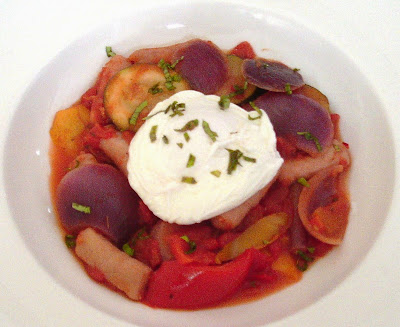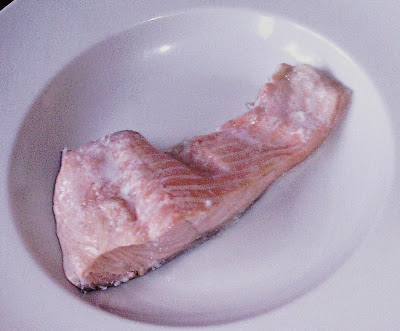 |
| Buffalo burger on a roll with bacon and fried egg served with potato wedges |
I am always on the look-out for new foodstuffs to try and genuinely do get a real buzz when I come across something really different and appealing for the first time. This usually happens when I'm travelling or visiting a new supermarket/shop but occasionally I find great new products much closer to home. In this instance, I was taking a browse around my local Morrsions when I happened to spy this new product from Highland Game. I'm very familiar with Highland Game and enjoy their venison products on a regular basis so I didn't hesitate when it came to picking up a pack of these burgers to sample.
 |
| Scottish Highland Game buffalo burger |
I'm actually not sure whether this was the first time I had ever tasted buffalo but it was certainly the first time I had ever tasted buffalo burgers. What I decided to do was take the traditional, American burger concept and adapt it a little bit to incorporate more Scottish products and concepts.
 |
| Baby potatoes ready for boiling |
Ingredients per Person
1 Highland Game buffalo burger
6 or 7 baby new potatoes
Salt
Scottish rapeseed oil
2 rashers of back bacon
1 large egg
1 large Scottish bread roll
Malt vinegar (optional)
 |
| Boiled potatoes are steamed before being left to cool |
Directions
It's necessary to first of oil cook the potatoes by boiling and allow them to cool completely. Simply wash but don't peel them and add them to a pot of cold, salted water. Bring the water to a simmer for twenty minutes or so until the potatoes are just softening and no more. Drain through a colander, allow to steam for a few minutes then cover and leave to cool.
 |
| Starting to griddle buffalo burger |
The burger here was griddled rather than fried. This is a great way of getting the outdoor barbecue effect during a cold, wet Scottish summer. If you don't have one of these sturdy pans, you really should consider picking one up for a bargain price on the likes of Amazon and introduce a whole new dimension to your cooking. Alternatively, you can fry the burgers but do note in particular that they will take significantly longer to cook in a conventional frying pan.
In order to griddle the burger, the griddle pan should firstly be brought up to a very high heat. This will take a few minutes. While this is happening, oil the burger lightly on both sides with rapeseed oil - never oil the griddle pan directly.
Lay the burger carefully on to the hot griddle pan and cook for about four and a half minutes each side.
 |
| Boiled and cooled potatoes are halved for deep frying |
The cooled potatoes should be halved lengthways for deep frying. They will need to be deep fried at a fairly high heat for about five minutes until crisp and golden.
 |
| Egg is broken in to small bowl for adding to frying pan |
The egg should be broken in to a small cup or bowl in preparation for frying and seasoned with a little salt. This makes it much easier to add to the frying pan for around three minutes frying over a medium heat. If you want some more good tips for frying eggs this way, check out the video immediately below by clicking on the arrow in the centre of the screen.
You could if you wish flip the egg over and serve it "over easy" or with the yolk completely cooked.
 |
| Griddled buffalo burger left to rest |
Lift the buffalo burger from the griddle pan to a plate, cover with foil and leave to rest for a few minutes.
 |
| Frying an egg sunny side up |
Pour the egg carefully in to the hot, lightly oiled frying pan, remembering to reduce the heat after twenty seconds or so to low.
 |
| Griddling bacon rashers |
The bacon rashers should be lightly oiled on both sides. They will take only a minute each side in the hot griddle pan to cook.
 |
| Deep fried potatoes are drained on kitchen paper |
Drain the potato wedges on kitchen paper on a large plate.
 |
| Griddled bacon is added to bottom half of bread roll |
Lift the bacon rashers on to the bottom half of your cut open roll on a serving plate.
 |
| Buffalo burger is added to bacon bed on roll and wedges are laid alongside |
Lift the buffalo burger on to the bacon rashers and plate the wedges alongside, seasoning the potatoes with salt and vinegar if required.
 |
| Fried egg is laid on buffalo burger |
Lift the fried egg carefully on to the buffalo burger and lightly close the roll over to serve.
 |
| Buffalo burger with bacon, fried egg and wedges is ready to serve |



































